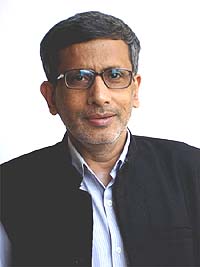 Steroid is a tantalizing stimulus which bewitches even the high and mighty. The sports world has lost many of its heroes, including the great Maradona, for abusing it. This is sad, for the steroid-backed performance of a sportsperson is artificial, not natural. However, if one were to carry the metaphor to the arena of regional development patterns in India, it needs careful consideration to decide what indeed could be termed as a steroid for development. Steroid is a tantalizing stimulus which bewitches even the high and mighty. The sports world has lost many of its heroes, including the great Maradona, for abusing it. This is sad, for the steroid-backed performance of a sportsperson is artificial, not natural. However, if one were to carry the metaphor to the arena of regional development patterns in India, it needs careful consideration to decide what indeed could be termed as a steroid for development.
In case of Bihar, ‘Special Category Status’ will not certainly be a steroid. Even though the growth rate of Bihar is the highest in the country, it is yet to reach the threshold. It would be erroneous to think that the development trajectory is politics-neutral. In the pre-liberalization economy, growth was significantly dependent on appropriate political connection or patronage. Most of the southern and western states in India, even though more developed compared to other parts of India at the time of independence, were administered double dose of steroids-one of ‘protection’ and the other was of ‘freight equalization’. Neither of these steps was politics-neutral. The mere fact that a policy is same for whole of India does not at all mean that its ‘impact’ would be uniform across the whole country. While these steps built massive industrial, economic and vibrant capitalist base in the select area of the country, it devastated eastern India in general and Bihar in particular. Even otherwise, the indigenous traders, artisans and industrialist were exterminated and old Bengal Presidency was subjected to systematic de-industrialization during the British period. Thus, the local capitalist constituency was weak here so as to influence the national policy in their favor in the post independence period. The neo-liberal votaries should realize even more that the non-market benefits of ‘protection’ and ‘freight equalizations’ were indeed steroids for the select areas. In fact, these policies were the result of conscious political decisions, immediately after independence. If ‘Special Category Status’ is granted to Bihar, it will simply be a corrective to that blatant historical discrimination.
Apart from the tangible steroids (implicit and explicit investments) to the developed states, the industry-centric development strategy was the bedrock of Nehruvite policy of the post-independent India. This entailed ‘import substitution’ model of 'protected' industrialization. Thus, the industrial base consolidated and expanded massively in India. But after liberalization and opening of the protected market of India, the growth rate leapfrogged, almost nearing the double digit, making India a ‘poster country’ of development. But one of the tragic consequences of this growth was increasing duality of the economy. Till Seventies, the duality between the rural and urban areas was relatively less; but in the wake of liberalization, that duality got widened to an alarming level instead of getting bridged. On both the counts of poverty and hunger index, Bihar has a long way to go. Over and above, the faulty spatial development policy of the central government since 1950s have also contributed to the duality, the policy steroids of 'protection' and 'freight equalization' at one end for the developed industrial state, on the other there has not been even a saline transfusion to the undeveloped states by equalizing grants in the social sectors.
Even if we forget about the earlier strategies of industrialization, where ‘freight equalization’ played a great role, why not come to the recent period as recent as the last budget? The Finance Minister has announced two industrial corridors in the budget — one Delhi-Mumbai and the other Chennai-Bengaluru-Mumbai. What is the corresponding allocation for the rest of India? What made him think similar industrial corridors Delhi-Kolkata and Kolkata-Chennai were not necessary? Over and above, ‘smart industrial’ cities to be located in Gujarat and Maharashtra, apart from bottleneck stalling road projects of 3000 km. will be built in the relatively developed stated. Is it the business of Central government to develop the already developed areas and marginalize the disadvantaged ones further?
It is probably not desirable to invoke the concept of steroid in the context of regional development strategies. If at all one does it, one should realize that in our political economy of development strategy, we have been providing steroids, in terms of investment and policy support, year after year to the rich states. Snap the supply of those steroids to the rich and see what happens. Instead of using the concept of steroids, it is probably more meaningful to use the concept of food supplement. If the disadvantaged states are asking for additional resources and more central investment for them, a kind of food (resource) supplement; it is basically meant for their capacity building and commensurate capitalist constituency, who will own up the development. This task has been neglected for long and the sooner we rectify the lapse the better it will be for the nation.
In this backdrop, in the absence of an indigenous authentic industrial class the ' Special Category Status ' possibly will usher in the Bihar model of capitalism, by tax breaks, on direct and indirect taxes, namely, income tax, excise, corporate and custom duties. This may accelerate private investment in the state, which in turn will ensure industrial renaissance. Thus, Bihar needs 'food' or at best 'saline' transfusion, and certainly not an 'steroid' for unauthentic bloated performance.
* Member-Secretary, Asian Development Research Institute (ADRI), Patna
|
